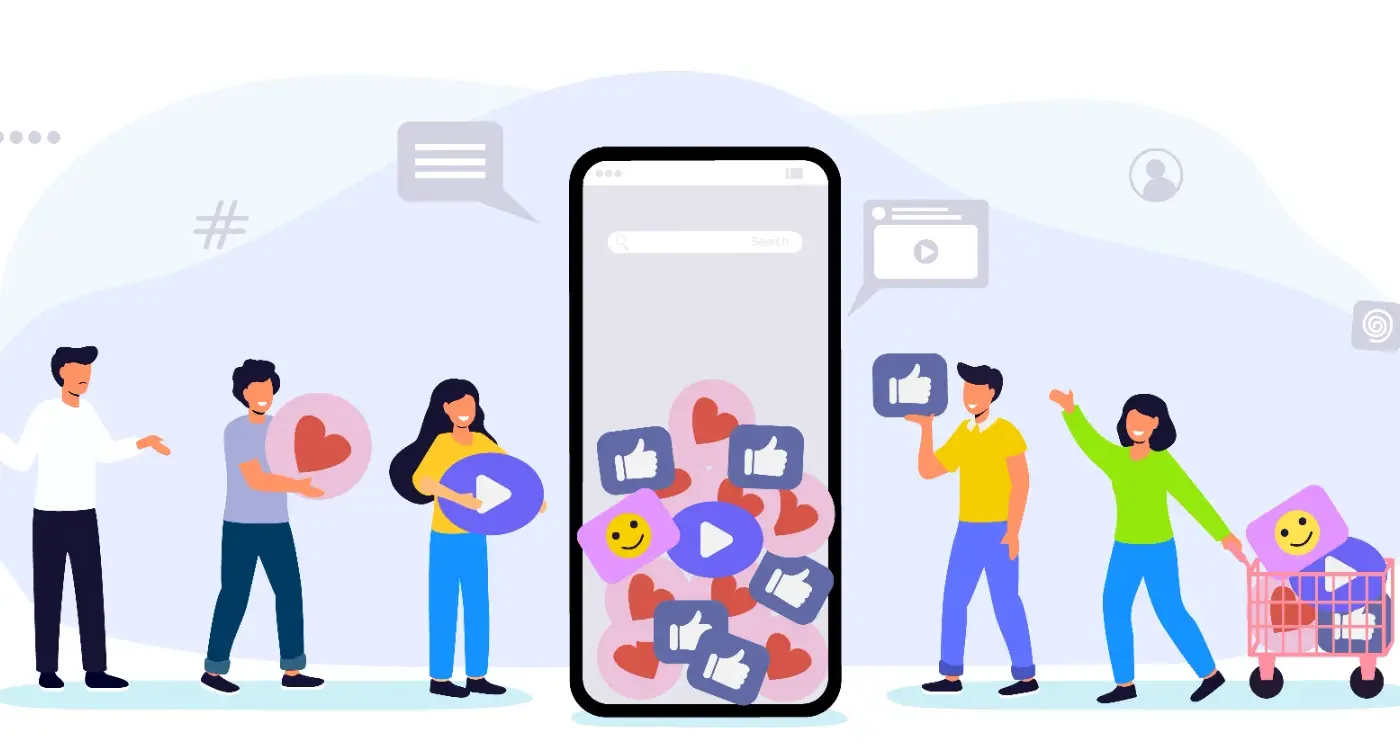What Makes Users Delete Apps Within the First Week?
Building mobile apps is one thing—getting people to actually keep using them? That's where things get tricky. After eight years in this business, I've watched countless brilliant apps crash and burn not because they were poorly built, but because they lost their users in those first few days after download.
The statistics are pretty sobering, honestly. Most apps lose around 80% of their users within the first week. That means if you get 1,000 downloads, you're lucky to have 200 people still using your app seven days later. And here's the thing—once someone deletes your app, getting them back is nearly impossible. They've moved on, probably forgotten you exist, and there are thousands of other apps competing for their attention.
I've seen this pattern repeat itself across every industry I've worked in. Healthcare apps that could genuinely help people manage their conditions better, fintech apps with features that banks would kill for, e-commerce apps with better user experiences than Amazon. But none of that matters if you can't get past that first week hurdle.
The first seven days after someone downloads your app are make or break—there's no second chance to make a first impression in the app world
What's particularly frustrating is that most of these deletions are completely preventable. They're not happening because the app concept is flawed or because users don't need the solution. They're happening because of fixable mistakes in user behaviour understanding, mobile app design choices, and onboarding processes that push people away before they've even seen what the app can really do. Let me show you exactly what's going wrong and how to fix it.
Poor First Impressions Kill Apps Fast
You know what's mental? Users decide whether they like your app within the first 10-15 seconds of opening it. That's barely enough time to say hello, let alone showcase all the brilliant features you've spent months building. But that's the reality we're working with—and its brutal.
I've seen apps with genuinely useful features get deleted faster than you can blink because they made a terrible first impression. The splash screen took too long to load, the interface looked cluttered, or worse—the app opened to a blank screen with no clear indication of what users should do next. It's heartbreaking, really.
Here's the thing about first impressions: they stick. If someone opens your app and feels confused or frustrated within those first few moments, they'll carry that negative feeling throughout their entire experience. Even if they give it another chance, they're already biased against it.
The Three-Second Rule
Most users expect apps to load and show meaningful content within three seconds. Not a loading spinner—actual content they can interact with. This means your app needs to be ready to deliver value immediately, even if it's still loading things in the background.
The apps that nail this understand something fundamental: your opening screen isn't just a technical requirement, it's your shop window. Would you walk into a shop that had nothing but empty shelves and a sign saying "we're setting up"? Course not.
- Show preview content or cached data while fresh content loads
- Use skeleton screens to indicate where content will appear
- Provide clear visual hierarchy so users know where to look first
- Include one obvious action users can take immediately
- Keep branding subtle—users care about functionality, not logos
Remember, you only get one chance to make that first impression. Make it count, because most users won't give you a second opportunity to get it right.
When Onboarding Goes Wrong
I've seen some truly terrible onboarding experiences over the years—the kind that make you wonder what the development team was thinking. You know what the worst part is? Most of these problems are completely avoidable if you just think about the user for five minutes.
The biggest mistake I see is asking for too much, too soon. Apps that demand your email, phone number, location, camera access, and your firstborn child before you've even seen what the app does. It's mental! Users want to try before they buy, not fill out a bloody application form. Let people explore your app first; show them the value, then ask for their details when it makes sense.
Another killer is the endless tutorial carousel. You know the ones—seven screens of "Tap here to do this, swipe there to do that" before you can actually use the app. Most people skip through these anyway, so you're just wasting their time and your development budget.
The Registration Trap
Forcing registration before users can see any real functionality is like asking someone to sign a contract before they know what they're agreeing to. I've worked with clients who were losing 60% of potential users at this stage. That's not user behaviour; that's user exodus!
Smart onboarding feels natural—it teaches users by letting them actually use the app. Progressive disclosure works wonders here. Show one thing at a time, when it's relevant, and always explain why you need what you're asking for.
Let users experience your app's core value within the first 30 seconds, without any registration or lengthy tutorials. You can collect their details later once they're hooked.
Performance Issues That Drive Users Away
Nothing kills an app faster than poor performance. I mean, we live in a world where people expect everything to be instant—if your app takes more than three seconds to load, you've already lost half your users. It's that simple.
The biggest performance killer I see? Apps that haven't been properly optimised for different devices. You might build something that runs beautifully on the latest iPhone, but what about that three-year-old Android phone your users are actually using? I've seen apps that work perfectly in testing but crash constantly on older devices because developers didn't consider the hardware limitations.
The Big Performance Problems
- Slow loading times—anything over 3 seconds is a death sentence
- Apps that drain battery life like there's no tomorrow
- Poor memory management causing crashes and freezing
- Laggy animations and unresponsive touch controls
- Apps that hog data and storage space unnecessarily
Battery drain is particularly brutal. Users will delete your app faster than you can say "background processing" if it's killing their phone's battery. I always tell my team—if the app is running background tasks, make sure they're absolutely necessary and optimised to the max.
Another thing that drives me mad? Apps that take forever to start up because they're trying to load everything at once. Smart loading is key here; show users something immediately, even if its just a skeleton screen, then load the rest progressively. People need to feel like something is happening, not stare at a blank screen wondering if the app has crashed.
The harsh reality is that performance issues compound. One slow screen leads to another, user frustration builds, and before you know it, they're gone forever.
The Permission Problem
Nothing kills an app faster than hitting users with permission requests the moment they open it. I mean, you've got about 30 seconds to make a good impression—and the first thing you do is ask for access to their camera, location, contacts, and notifications? It's like asking someone to marry you on the first date.
The worst apps I've seen bombard users with three or four permission requests before they've even seen what the app does. Users don't understand why you need their location if they haven't seen your features yet. They don't know why you want to send them notifications when they haven't experienced any value. And they definitely don't want to give you access to their photos before they know you're trustworthy.
Context is Everything
Smart apps ask for permissions at the exact moment they're needed. If your app has a photo-sharing feature, ask for camera access when the user taps the camera button—not when they first open the app. Want to send location-based notifications? Wait until they're using the map feature, then explain why location access will make their experience better.
Users are 3 times more likely to grant permissions when they understand the specific benefit and context behind the request
The iOS Challenge
iOS makes this particularly tricky because you only get one chance to ask for each permission. If a user says no, you can't ask again through the system—you have to send them to settings manually. That's why timing and context matter so much. Android is more forgiving, but users are still annoyed by poorly timed requests.
The best approach? Show, don't tell. Let users explore your app and understand its value first. Then, when they want to use a feature that requires permissions, they'll happily grant access because they can see the benefit. It's user behaviour 101, really.
Design Fails That Frustrate Users
Bad design decisions can kill an app faster than you'd think. I've seen apps with solid concepts fail because nobody could figure out how to use them properly—it's honestly heartbreaking when you know the team put months of work into it.
The most common design mistake? Making users think too hard about basic actions. If someone has to pause and wonder "where do I tap to do what I want," you've already lost them. Navigation should feel obvious, even if its your first time using the app.
The Worst Design Offenders
- Buttons that don't look like buttons—flat design taken too far
- Text that's too small to read comfortably (looking at you, size 12 fonts)
- Icons that could mean anything—creativity isn't always helpful here
- Forms that span multiple screens when they could fit on one
- Search functions hidden behind mysterious symbols
- Colour schemes that make text disappear into backgrounds
One thing that drives me mad is when apps try to reinvent common interface patterns. Users expect certain things to work in certain ways—the hamburger menu, the back button, the search icon. When you mess with these conventions, you're creating friction where none should exist.
The Mobile-First Reality
Too many apps still feel like desktop websites squeezed onto phone screens. Buttons end up too small, menus become impossible to navigate with thumbs, and important actions get buried under layers of navigation. Your users aren't using mouse cursors; they're using their fingers on small screens, often while walking or multitasking.
The fix? Test your app with real people using one hand while distracted. If they can't complete basic tasks easily, its back to the drawing board. Good design should feel invisible—users shouldn't notice it because everything just works the way they expect it to.
Value Proposition Confusion
I see this all the time—apps that look polished and work perfectly but still haemorrhage users in the first week. The reason? Users simply don't understand what the app actually does or why they should care. It's a bit mad really, spending months building something only to confuse people about its core purpose.
When someone downloads your app, they've got about 30 seconds to figure out what value you're offering them. If your value proposition isn't crystal clear from the moment they open it, they're gone. I mean, users today have thousands of apps competing for their attention; they won't stick around trying to decode what yours is supposed to do.
The biggest mistake I see is apps trying to be everything to everyone. They'll say something vague like "the ultimate productivity solution" without explaining what that actually means in practical terms. But here's the thing—people don't download abstract concepts. They download solutions to specific problems they're having right now.
Write your value proposition like you're explaining it to someone at the pub. If they don't get it immediately, it needs work. Test this with real people before you launch.
Common Value Proposition Mistakes
- Using industry jargon instead of plain English
- Focusing on features rather than benefits
- Making users guess what the app does
- Burying the main value behind secondary features
- Creating confusing onboarding that doesn't connect to the core value
Your app's value should be so obvious that users can explain it to their friends without thinking. If they can't do that within their first session, you've lost them—and probably their potential referrals too.
Push Notification Mistakes
Push notifications can make or break an app in its first week. I've seen brilliant apps get deleted faster than you can say "allow notifications" because they got this wrong from day one. The thing is, most developers treat push notifications like a megaphone when they should be treating them like a gentle tap on the shoulder.
The biggest mistake? Asking for notification permissions immediately when someone opens your app for the first time. Think about it—would you give a stranger your phone number before you even know their name? Users need to understand the value your app provides before they'll trust you with notification privileges. Wait until they've had a positive experience, then explain why notifications will help them specifically.
The Most Common Push Notification Blunders
- Sending notifications within hours of download without adding value
- Using generic messages like "Come back to our app!" instead of personalised content
- Bombarding users with multiple notifications per day right from the start
- Sending notifications at inappropriate times (like 3am) without timezone consideration
- Making notifications feel like spam rather than helpful reminders
- Not providing easy ways to customise notification frequency
- Sending the same message to all users regardless of their behaviour
Here's what works: Start with one well-timed, relevant notification per week maximum. Make it personal and useful. A fitness app might say "Your 7-day streak is impressive! Ready for today's 10-minute workout?" rather than "Workout time!" The difference is huge.
Remember, every notification is an interruption. Make sure its worth it. If you wouldn't want to receive that notification yourself, don't send it to your users. The goal isn't to remind people your app exists—it's to add genuine value to their day.
Technical Bugs and Crashes
Nothing—and I mean nothing—kills user trust faster than an app that crashes on first launch. I've seen brilliant app concepts die within days because the development team rushed to market without proper testing. Its brutal but true; users have zero tolerance for buggy apps when there are perfectly good alternatives just a tap away.
The numbers tell the story here. If your app crashes just twice during a user's first session, you've got roughly a 70% chance they'll delete it immediately. And here's the thing that really gets me—most of these crashes are completely avoidable with proper quality assurance testing.
A single crash during onboarding can undo months of marketing spend and brand building in seconds
I always tell my clients that testing isn't optional, its insurance. You need to test on different devices, different operating system versions, and different network conditions. That budget Android phone with 2GB of RAM? Your app needs to work flawlessly on that too, not just the latest iPhone.
The Most Common Technical Killers
Memory leaks are the silent killers—your app might work fine for a few minutes but then slow down or crash as it consumes more resources. Network errors when loading content are another big one; if your app can't handle a poor mobile connection gracefully, you're going to lose users fast. And don't get me started on apps that crash when users rotate their screen or switch between apps.
The fix? Test early, test often, and test on real devices. Emulators are useful but they don't replicate the real-world conditions your users face every day. Invest in proper crash reporting tools so you can spot issues before they become widespread problems.
After building hundreds of apps and watching countless others succeed or fail, I can tell you that the first week is make-or-break time. Users are ruthless—they'll give you maybe 30 seconds to prove your app is worth keeping. That's it.
The apps that survive this brutal first week aren't necessarily the most complex or feature-rich ones. They're the ones that respect their users time, solve a real problem, and make a great first impression. Simple as that, really.
Every issue we've covered—from sluggish load times to confusing onboarding flows—comes down to understanding your users' mindset when they first open your app. They're not patient. They're not forgiving. And they definitely aren't going to stick around if you waste their time with permission requests they don't understand or push notifications that start immediately.
I've seen apps with million-pound budgets fail because they ignored these basics. On the flip side, I've watched simple apps with tight budgets succeed because they nailed the fundamentals. The difference? The successful ones put user experience first, not features.
Here's what I tell every client: your app's first week performance tells you everything about its long-term potential. If people are deleting it quickly, don't blame the market or competition. Look at your onboarding process, check your performance metrics, and honestly evaluate whether you're delivering immediate value.
Building an app that survives the first week isn't rocket science—it just requires discipline. Focus on solving one problem really well, make your app fast and reliable, and respect your users intelligence. Do that, and you'll be ahead of 90% of the apps in the store. It's honestly that straightforward.
Share this
Subscribe To Our Learning Centre
You May Also Like
These Related Guides

What Makes Users Share Apps with Their Friends?

What Role Do Tutorials Play In Effective App Onboarding?



